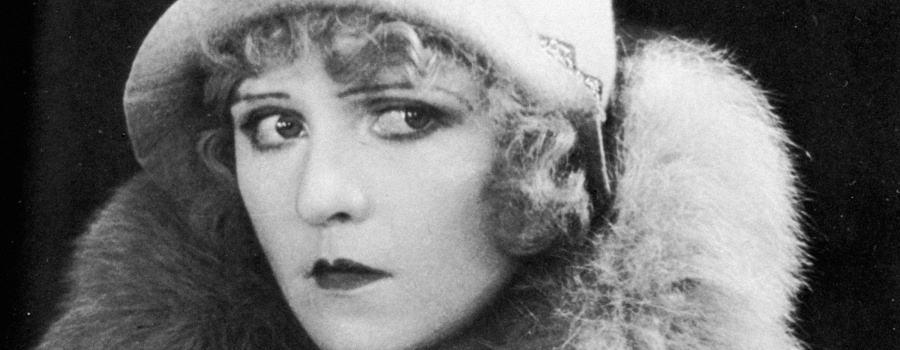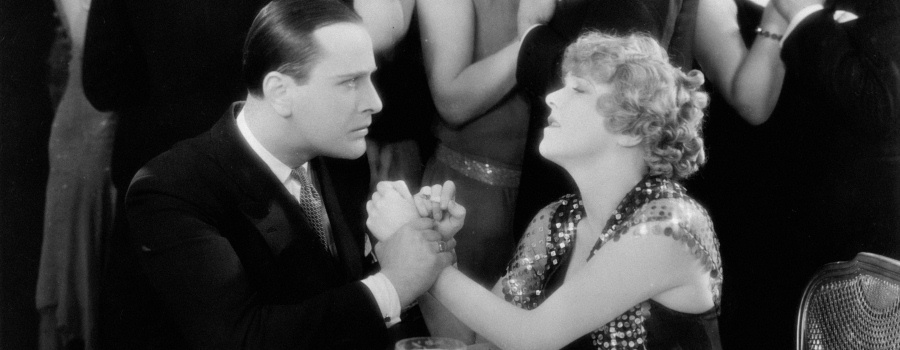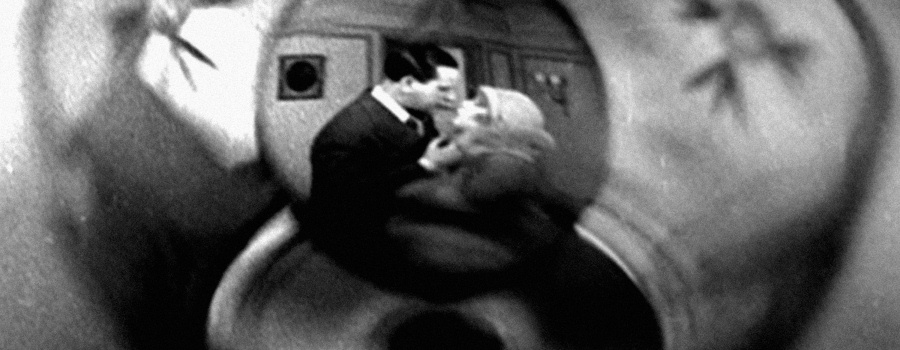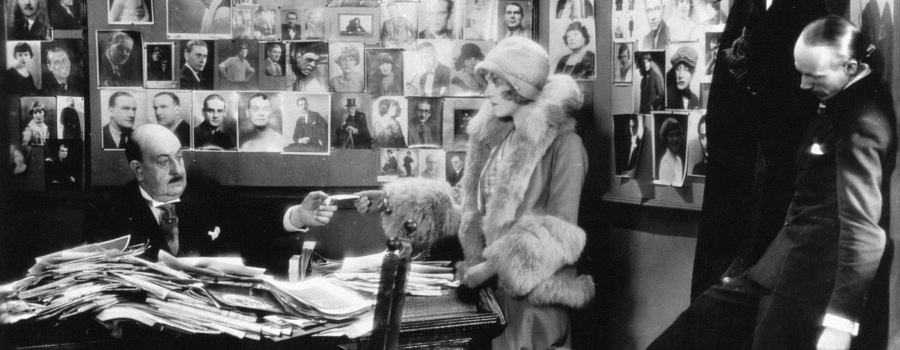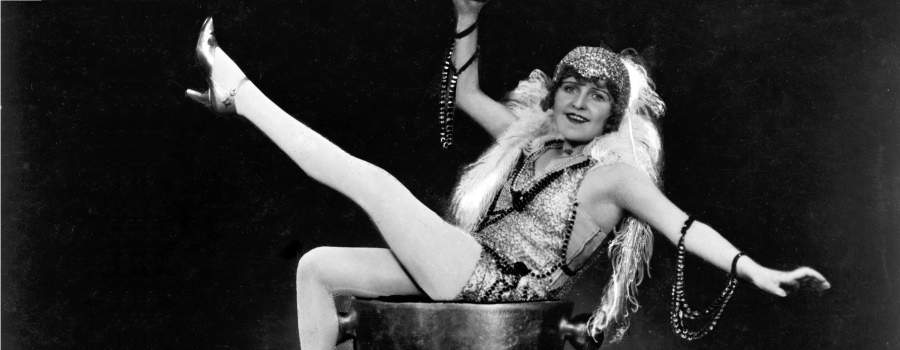Champagne (1928)
/0002.jpg) | |
| Alfred Hitchcock | |
| John Maxwell | |
| Eliot Stannard | |
| Walter C. Mycroft (original story) | |
| Betty Balfour Gordon Harker | |
| Jack E. Cox | |
| 89 minutes (8,038 feet) | |
| black & white | |
| silent with English intertitles | |
| 1.33:1 | |
| British International Pictures | |
| Wardour Films (UK) | |
| DVD | |
Synopsis
A spoilt rich girl leads a life of luxury on the profits from her father's champagne business. To bring her back down to earth, he tells her that all the money has been lost and so she must go seek her fortune.
Production
According to most sources, Champagne originated with an idea by British International Pictures' scenario editor and literary adviser Walter Mycroft, although Mycroft fails to mention the film in his published memoirs.[1][2]
Pre-Production
Screenplay
Working with Eliot Stannard, and possibly Hitchcock too, Mycroft initially attempted a serious story about a girl from Reims in France who works packing champagne bottles and wonders what happens to each bottle. Eventually she travels to a big city where she sees the effects of over consumption of the product and, after a harrowing journey, she eventually returns to her old job in Reims. With each departing crate, she thinks to herself, "Well, that's going to cause some trouble for somebody."[3]
The casting of popular comedic actress Betty Balfour necessitated a lighter storyline and led to a hasty rewrite of the scenario.[4]
Casting
At a luncheon press conference held on 14th October 1927 in London, studio chairman John Maxwell announced that he had signed Balfour — one of the country's most popular leading actresses and known as "Britain's Queen of Happiness" — and that her first role would be in Champagne which would be directed by Hitchcock.
Appearing in his third Hitchcock film in a row, Gordon Harker played the roll of the father who decides to teach his daughter a lesson in life.
Principal Photography
Filming began in February 1928 with only a partial scenario completed. During filming breaks, Hitchcock and Stannard worked on new scenes. Assistant cameraman Alfred Roome, working on one of his first films, later recalled, "They didn't have a whole script. They wrote it on the back of envelopes on the way to the studio. You never knew what was going to happen."[5]
Roome also remembered how the trick shot through the champagne glass was achieved:
I was the one who had to focus through the bottom of the glass. Hitch had it made specially by a glass manufacturer who put a lens into the bottom of the giant champagne glass, so we could shoot through it and get a clear picture of what was happening at the other end of the room. We all said it wouldn't work. Most people said that of Hitch's ideas, but they almost always did work.[6]
Another crew member working on one of his first films was stills photographer Michael Powell, who would go on to become on the England's leading directors. In his biography, A Life in Movies, Powell recalled that Hitchcock detested Balfour and referred to her as "a piece of suburban obscenity", possibly because he had to hoped to make his next film with actress Anny Ondra.[7]
Perhaps to amuse himself during making a film he had little interest in, Hitchcock had cinematographer Jack E. Cox kill the lights whenever the studio's previous photographer attempted to take a still, plunging the set into darkness. However, Hitchcock warmed to Powell, allowing him to take the necessary photographs before inviting him to join Cox, Stannard ("the author of this dreadful film!") and himself at a nearby pub after the day's filming had been completed.[8][9]
Although the majority of scenes were filmed at Elstree Studios, the ship-based exteriors were filmed onboard a liner docked at Southampton.[10]
The film was completed by the end of June, just in time for the birth of Alma and Alfred's only child, Patricia, on July 7th.
Champagner (1929)
Shortly after completing Champagne, Balfour and a few of the other cast members made a second film for BIP and Austrian company Sascha-Film titled Champagner in Austria, Palace de Luxe in France and Bright Eyes in English-speaking countries. Despite the similarity in titles, the two films have little in common apart from the actors.[11]
Release & Reception
BIP's press book for the Champagne summarises the film...
The story, as its title suggests, is of a light, frivolous, frothy character, interspersed with touches of tense drama, in which the star has every opportunity to display her wonderfully vivacious and appealing personality. It also provides the director with countless opportunities to demonstrate his remarkable ability, which has earned for him the reputation of being the premier British director and one of the finest in the world.[12]
The Manchester Guardian's review of the film noted that Balfour was playing an American, but "her director is Alfred Hitchcock, and so she is allowed to be the same delightful Betty who has so often been a light-hearted little Cockney".
The review in Variety was much less favourable: "The story is of the weakest, an excuse for covering 7,000 feet or harmless celluloid with legs and close-ups [...] the direction and the acting are dire."[13]
Preservation Status
As part of their "Save the Hitchcock 9" campaign, started in 2010, the British Film Institute undertook a full, if problematic, restoration of Champagne.
Analysis of the only surviving camera negative soon revealed it was a backup negative, comprised of the second best takes of each scene and likely used for export prints. All other surviving prints appeared to be derived from this negative, so the original British theatrical release seemingly no longer exists. Instead, the BFI based their restoration on the backup negative.[14][15]
See Also...
For further relevant information about this film, see also...
- 1000 Frames of Champagne (1928)
- Articles about Champagne (1928)
- Filming locations
- Titles and Intertitles
- Trivia
- Web links to information, articles, reviews, etc
DVD Releases
released in 2008

|
Le Masque de Cuir (1927) / À l'Américaine (1928) - Studio Canal (France, 2008) R2 PAL 1.33:1 |
released in 2007

|
Champagne (1928) - Optimum Releasing (UK, 2007) R2 PAL 1.33:1 |

|
Endlich Sind Wir Reich (1931) - Arthaus (Germany, 2007) R2 PAL 1.33:1 |
Image Gallery
Images from the Hitchcock Gallery (click to view larger versions or search for all relevant images)...
Film Frames

Themes
Cast and Crew
Directed by:
- Alfred Hitchcock
- Frank Mills - assistant director
Starring:
- Betty Balfour - Betty
- Gordon Harker - Betty's Father
- Jean Bradin - The Boy
- Ferdinand von Alten - Baron
- Fanny Wright
- Alexander D'Arcy (uncredited)
- Vivian Gibson (uncredited)
- Clifford Heatherley - The Manager (uncredited)
- Claude Hulbert - A Guest (uncredited)
- Hannah Jones - Club Servant (uncredited)
- Phyllis Konstam (uncredited)
- Gwen Mannering (uncredited)
- Jack Trevor - The Officer (uncredited)
- Marcel Vibert - Maitre d'Hotel (uncredited)
- Sunday Wilshin (uncredited)
Produced by:
Written by:
- Alfred Hitchcock
- Walter C Mycroft - original novel
- Eliot Stannard
Photographed by:
Production Design by:
- Michael Powell - set designer (uncredited)
Art Direction by:
Other crew:
- Michael Powell - still photographer
Notes & References
- ↑ Alfred Hitchcock: A Life in Darkness and Light (2003) by Patrick McGilligan, page 103
- ↑ "The Time of My Life" - by Walter C. Mycroft
- ↑ The primary sources of information about Hitchcock's work have conflicting details as to when his involvement with the film's scenario began and the director's discussions with François Truffaut in 1962 might not be a true reflection of the events.
- ↑ Only a couple of weeks before Balfour was announced in the role, she had been voted the most popular British movie star in a poll of over 30,000 London cinema-goers. The female voters named Ivor Novello their most favourite male actor. Source: Daily Mail (29/Sep/1927).
- ↑ Alfred Hitchcock: A Life in Darkness and Light (2003) by Patrick McGilligan, page 103
- ↑ Alfred Hitchcock: A Life in Darkness and Light (2003) by Patrick McGilligan, page 103
- ↑ Alfred Hitchcock: A Life in Darkness and Light (2003) by Patrick McGilligan, pages 103-4
- ↑ Alfred Hitchcock: A Life in Darkness and Light (2003) by Patrick McGilligan, pages 104-5
- ↑ "A Life in Movies" - by Michael Powell (1986)
- ↑ There is conflicting information about exactly which ship was used — author Gary Giblin names it as the Cunard Line's RMS Aquitania whilst a contemporary newspaper account says filming took place aboard the RMS Berengaria.
- ↑ Internet Movie Database: Bright Eyes (1929), director Géza von Bolváry
- ↑ BFI (2012) - Hitchcock's Champagne: the 1928 pressbook
- ↑ Variety (1928) - Champagne
- ↑ BFI (2012) - Restoring Hitchcock 4: the trouble with Champagne
- ↑ Journal of Film Preservation (2012) - London - Restoring Hitchcock
| Hitchcock's Major Films | |
| 1920s | The Pleasure Garden · The Mountain Eagle · The Lodger · Downhill · Easy Virtue · The Ring · The Farmer's Wife · Champagne · The Manxman · Blackmail |
| 1930s | Juno and the Paycock · Murder! · The Skin Game · Rich and Strange · Number Seventeen · Waltzes from Vienna · The Man Who Knew Too Much · The 39 Steps · Secret Agent · Sabotage · Young and Innocent · The Lady Vanishes · Jamaica Inn |
| 1940s | Rebecca · Foreign Correspondent · Mr and Mrs Smith · Suspicion · Saboteur · Shadow of a Doubt · Lifeboat · Spellbound · Notorious · The Paradine Case · Rope · Under Capricorn |
| 1950s | Stage Fright · Strangers on a Train · I Confess · Dial M for Murder · Rear Window · To Catch a Thief · The Trouble with Harry · The Man Who Knew Too Much · The Wrong Man · Vertigo · North by Northwest |
| 1960s | Psycho · The Birds · Marnie · Torn Curtain · Topaz |
| 1970s | Frenzy · Family Plot |
| view full filmography | |
